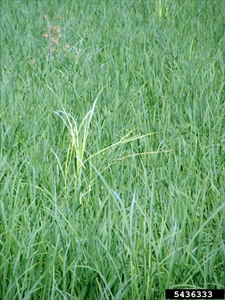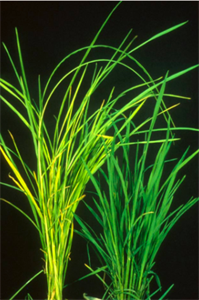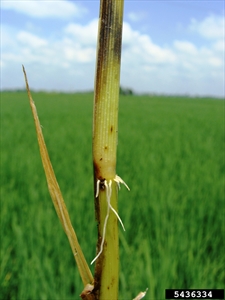- Widespread. Africa, Asia, North, South, Central America, the Caribbean, Europe, Oceania. In America Samoa, Australia, Fiji, Guam, New Caledonia, New Caledonia, Papua New Guinea, Solomon Islands, Vanuatu.
- Moderately serious fungal disease. On rice and many other crops (e.g., maize, sorghum, sugarcane) and weeds; those of economic importance in grass family. IRRI reports losses of up to 20% in Asia. Reported a serious seedborne and soilborne disease of dryland rice in Fiji.
- Infected seed results in poor emergence, or those that emerge are tall, thin yellow-green with few tillers and usually die. Survivors bear panicles of empty grain, with pink-white fungal growth at soil level, moving up the stem; nodes become pink to purple and form roots. Spores develop on the stems, either asexual ‘conidia’ or sexual ‘ascospores’ leading to contaminated and/or infected seed. Soilborne infections cause root rots.
- Spread by spores on the wind or in water. Long-distance spread on and in seed. Survival in seed (1-2 years), in soil (1 year), and in plant debris. IRRI reports seedborne levels of up to 25%.
- Cultural control: rotate after 2 years with vegetables or root crops; if practical, pull out infected plants; collect straw and burn, or plough in stubble and straw after harvest.
- Chemical control: seed treatments - use thiram or thiram plus thiophanate-methyl, or fungicides in azole and strobilurin groups.






